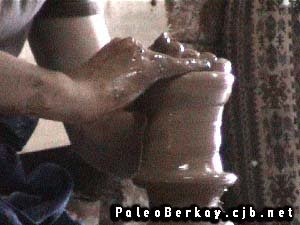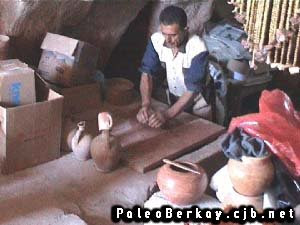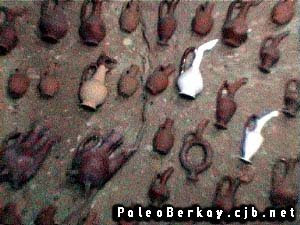
©Berkay Dinçer
Decorated potteries waiting for klin.
 ©Berkay Dinçer
©Berkay Dinçer ©Berkay Dinçer
©Berkay Dinçer ©Berkay Dinçer
©Berkay DinçerImportant Paleolithic sites of northwestern Turkey. This map is the
first appearance of Yatak for the wider public.
A view of stone pile containing Paleolithic artifacts. It was taken at
the very first days of the discovery of Yatak. Note the pile is
relatively smaller than the later photos.
Prof. Dr. Oğuz Tekin giving me (Berkay Dinçer) an award of The History
Foundation (Tarih Vakfı - Turkey) for my paper about the Paleolithic of
Yatak.
The biggest Paleolithic chopper from Yatak which is heavier that 1.75
kilograms.
(Yatak'ta bulunmuş en büyük satır.)
These stones are collected from the Paleolithic site of Yatak. Only
one in the center is an artifact, a chopper, the others are just
nothing for the archaeologist.
(Yatak'tan taşlar, bunlardan sadece ortadaki bir Paleolitik alet,
diğerleri "hiçbir şey".)
Stone pile containing Paleolithic artifacts from Yatak. Farmers collect
stones from their fields and use them in construction in the village.
But the problem is, there are artifacts inside!
(Yatak'taki taş yığını, Paleolitik aletler de içeriyor. İnşaatlarda
kullanılmadan önceki hali.)
A Paleolithic biface from Yatak. This biface was the first biface of
Turkish Thrace. It was given to museum autorities, but lost since that
time.
(Yatak'tan -iki yüzeyli- el baltası.)


